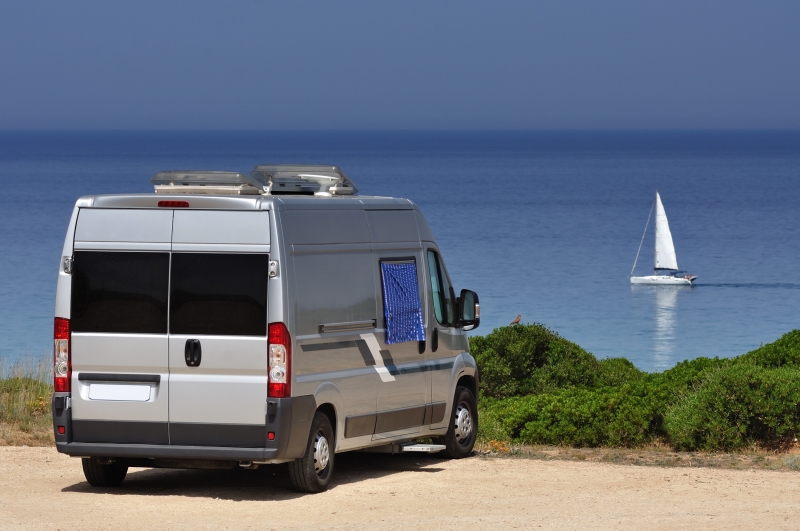When we mention camper vans, considered Class B motorhomes, the image that might come to mind is an olive colored VW van with flower power.
But camper vans come in a variety of colors, appearances, sizes, amenities, and floor plans. It seems a lot of people prefer them, too. Class B’s have built-in sleeping, eating, and bathroom amenities at a very condensed scale.
According to an article by the Elkhart Truth, shipments of Class B motorhomes were up 35 percent in October 2014 compared to a year before.
But before you buy a new or used Class B motorhome, it’s important to know what you’re looking for, what amenities you’re willing to compromise on, and how much you’re willing to spend.
Floor Plan
Camper vans come equipped with sleeping, eating, cooking, and bathroom facilities, but at a condensed scale. Beds are usually converted from sofas or dining benches, even a Murphy bed, though some larger models have rear permanent beds. Some camper vans come with a penthouse option to lift the height of the ceiling so that you have more head room in the interior, as well as sleep two with an optional bed.
Bathrooms are tight: Some come with separate showers and toilets while others have a combination known as a wet bath. The kitchen is usually a single countertop with a sink and small range. A fridge is usually included as well. Slide outs are available on some models to offer additional space for beds or sofas.
Structure and Function
Class B motorhomes are built on a standard van chassis, sometimes with small extensions. Engines – Ford, Chrysler, GM, Dodge, Mercedes-Benz – usually power these RVs. You can find 4WD or 2WD options.
Fuel
Class B motorhomes have a fuel tank size of 25-35 gallons. They offer the best gas mileage compared to other classes of motorhomes, around 18-25 mpg on gas and 22-25 on diesel.
Pros
This class of motorhome is the most like a car to drive, and its size is small enough that it can be parked or stored in a standard home garage. They are easy to drive around for sightseeing away from the campsite. Perfect for short trips, Class B motorhomes offer families of two to four, depending on the size of the rig, pretty much all that’s necessary to have a good time.
Cons
Camper vans get fairly expensive at a $40,000-$100,000 price tag (a new Leisure Travel Van “Unity” powered by Mercedes-Benz has an MSRP of $121,000) and have less room than a low-end (introductory) Class A motorhome, which usually offers more space and luxuries. Space can be a con as there is little room to cook or relax inside the camper van, so if you want to live in an RV full time, have a larger family, or plan to travel extensively, then Class A or Class C motorhomes might suite your needs more adequately.
What are the biggest differences between a Class B and a Class C motorhome though, if you’re caught between classes? Typically, Class C’s have an overhang above the driver compartment that houses an extra bed while Class B’s do not. Class C’s are simply larger, have more room, and offer more amenities thanks to being built on a larger, stronger truck chassis. Some Class C’s can get so large that they are like small Class A motorhomes. But even some camper vans (Class B) look very close to a Class C because of the presence of an overhang, what are sometimes referred to as B-Plus. These hybrids may provide a good alternative solution.
All in all, there are so many options that you just need to do the research to find or customize your ideal RV. You may find yourself transitioning between one class and another, but if you’re set on a camper van, then keeping this information in mind will help you make the right purchase. Then, hit the road!
To find a dealer near you, use our interactive map!

